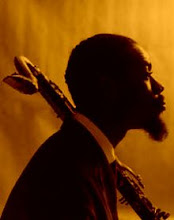There is a brooding, breathtaking, heart-piercing melody that has sparked the imaginations of music fans for 60 years; countless scholars and critics have analyzed it, legendary producer Orrin Keepnews called it the "National Anthem of Jazz." The song has been recorded and performed with greater frequency than any other standard composed by a jazz musician, in this case, pianist Thelonius Monk. Much has been said and written about him too - genius, virtuoso, eccentric, mysterious, complex are among the many descriptions for his "sui generis" persona. But Monk the romantic? - it's an impression that would evade those of us not among the very few to know him personally. However, a close examination of Thelonius Monk and his body of work reveals extraordinary sensitivity and more than just a hint of romance. How and why he invented this song, the first of 70 original compositions published during his lifetime, suggests it is quite possibly the most romantic of all his titles.
Since you went away I missed you...
Ev'ry hour I wished to kiss you...
You are in my dreams...always
I need you so...
That is the first verse of I Need You So, which was registered under the name "Thelonius Monk" on September 24 1943; he gave the credit for the lyrics to a neighborhood friend, Thelma Elizabeth Murray. A few months later, Monk dropped the lyrics, kept the melody, changed the key and the title. By early 1944 Monk's running buddy and fellow pianist Bud Powell was on a mission to have band leader Cootie Williams check out the revised version of the song - Powell was in the employ of the former Ellington trumpeter who was blown away when Monk eventually played it for him. What happens next is the song becomes the theme of Williams' popular orchestra. He also took co-composer credit, hired a Broadway wordsmith named Bennie Hanighan to write new lyrics and an added short addition to the song's introduction. Many have since argued that the additional 8 bar cadenza was actually created by Dizzy Gillespie, who also added the song to his orchestra's repertoire in 1946. This was one of several annoying instances when other musicians were playing and claiming part ownership of Monk's originals; the story about Coleman Hawkins and a riff on the classic "Lady Be Good" comes to mind; Hawkins recorded it as his own composition, Monk claimed he wrote the first 16 bars of the final arrangement of the song and later recorded it as an original with a different title - "Hackensack."
In any case, Thelonius Monk's reputation was enhanced by the affirmative reaction to his compositions and he thusly gained the confidence and cache' to start a band of his own, which recorded the song in question for the first time in 1947. But ultimately the song would not have gained it's notability had it not been for what happened next.
Miles Davis' first album for Columbia, done in the fall of 55 and spring of 56, used the song as it's title statement, in an attempt to catch the wave of that Newport performance. But because of contractual obligations to another label, it could not be not released until 1957. Nonetheless, the record was enthusiastically received and is still considered one of Davis' best; the caliginous vibe of Monk's tune was in perfect sync with the Miles Davis mystique. The two became emblematic of a new standard in jazz expression and appreciation, even though the song was written 13 years before. At that time Miles was the most emulated and highest paid modern jazz musician in the world and it's likely Monk's tune blew up big time in part, because of it's connection that success. In an ironic twist, Miles was in a sense, returning the favor; playing the song at the Newport Jazz Festival lead to his "comeback" and the popularity of his album bearing the song's title connected with Monk's resurgence, which also began in 1957 during a series of concerts at New York's Five Spot jazz club.
By the way, there is a story about Miles being pissed off at John Coltrane for leaving his band to play with Monk during this period and after one of the Five Spot gigs; Miles & Coltrane argued after which Miles punched Coltrane... we'll save that one for another time.
One could say the success of this song is due to it's "timelessness" ( I've never really known what that means). One might also say this was a case of right place right time - a time when in was out and out was in, artistically speaking. Listen to the piece, and you'll feel connected to the same moody, counter culture that pervaded the later half of 1950's. You can also hear that Thelonius Monk the composer was light years ahead of his time.
Nellie Monk w/ Thelonius and John Coltrane, 1958
Monk, on the cover of Time Magazine, 1964
Happy Valentine's Day...
Monk and Nellie, in the 1960's






No comments:
Post a Comment